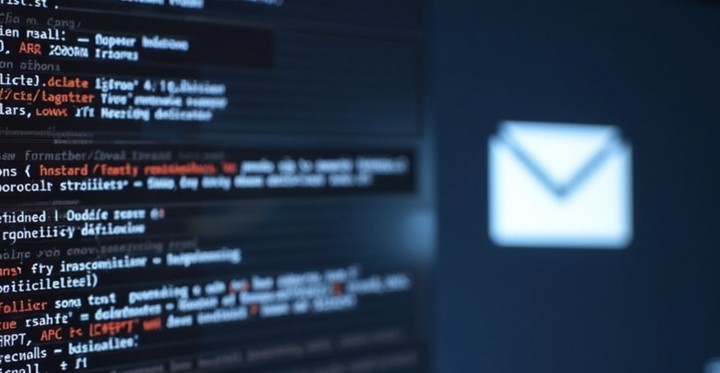Discover more from ESSGroup
Subscribe to get the latest posts sent to your email.

Cybersecurity researchers are raising alarms about ongoing exploitation attempts targeting a recently disclosed vulnerability in Synacor’s Zimbra Collaboration platform.
According to enterprise security firm Proofpoint, exploitation activity started on September 28, 2024. Attackers are aiming to exploit CVE-2024-45519, a critical flaw in Zimbra’s postjournal service that allows unauthenticated attackers to execute arbitrary commands on vulnerable systems.
“The spoofed emails, posing as Gmail, were sent to fake addresses in the CC fields to trick Zimbra servers into parsing and executing them as commands,” Proofpoint shared in a series of posts on X. The spoofed addresses included Base64-encoded strings that Zimbra executed with the sh utility.
The flaw was patched by Zimbra in versions 8.8.15 Patch 46, 9.0.0 Patch 41, 10.0.9, and 10.1.1, released on September 4, 2024, thanks to the discovery by security researcher lebr0nli (Alan Li).
Although the postjournal service may not be enabled on all systems, Ashish Kataria, a security engineer at Synacor, emphasized the importance of applying the patch to prevent potential exploitation. As a temporary measure for systems without the patch, removing the postjournal binary could be considered.
Proofpoint also revealed that the CC’d addresses, once decoded, attempt to plant a web shell at /jetty/webapps/zimbraAdmin/public/jsp/zimbraConfig.jsp, allowing command execution or file downloads over a socket connection.
The exploitation began after Project Discovery published technical details, revealing that the vulnerability stems from unsanitized user input being passed to popen, allowing attackers to inject commands.
In light of these active attacks, it’s critical for Zimbra users to apply the latest patches immediately to safeguard against these threats.
Subscribe to get the latest posts sent to your email.
Lorem Ipsum is simply dummy text of the printing and typesetting
industry. Lorem Ipsum has been the industry's


Threat Overview
AlienVault has recently published a threat report highlighting the activities of a nation-state actor known as Secret Blizzard. This actor group, associated with Russia, has been observed using tools and infrastructure from other malicious actors to compromise targets in Ukraine.
Background
In between March and April 2024, Secret Blizzard utilised the Amadey bot malware associate with cybercriminal activity for deployment purposes as well. Moreover, in January 2024, Secret Blizzard leveraged a backdoor from Storm-1837 to install its malware.
Scope
The attack was conducted against Ukrainian military targets and involved multiple attack vectors including strategic web compromises, adversary-in-the-middle campaigns, and spear-phishing for the initial access.
Tactics, Techniques, and Procedures (TTPs)
Secret Blizzard’s approach to attacking targets is diverse and innovative. The actor employs various techniques including:
Strategic Web Compromises: Targeting websites and domains belonging to Ukrainian military institutions.
Adversary-in-the-Middle: Intercepting communications between servers, devices, or networks.
Access Vector
Secret Blizzard utilized Amadey bot malware associated with cybercriminal activity for deployment purposes. Additionally, in January 2024, Secret Blizzard leveraged a backdoor from Storm-1837 to install its malware.
Prior exploitation techniques used by the actor include:
Amadey Bot Malware: The amadey bot malware was exploited for deployment purposes as well. This malware is also associated with cybercriminal activity and provides the attacker with malicious code for compromise.
Tools and Infrastructure Used
Secret Blizzard has used tools and infrastructure from other threat actors, including:
Tavdig and KazuarV2 Backdoors: The Tavdig and KazuarV2 backdoors were employed by the actor to deploy its custom malware on Ukrainian military devices.
Techniques Exploited for Execution of Attacks
The actor relies on various techniques such as spear-phishing to gain initial access.
Nigerian scams and spoofing attacks are frequently used by cyber attackers, including adversary groups who want to infiltrate networks remotely without revealing their intent. This technique can be employed to trick users into divulging sensitive information.
Spear phishing is often used by adversary groups to bypass security defenses. This technique is employed to trick users into divulging sensitive information which helps to execute further attacks and exploits.
Tactics, Techniques, and Procedures (TTPs) are an extremely effective method of achieving the goals of your attack vector.
Protecting yourself against such sophisticated attack methods can seem daunting, however it is essential not to be caught off guard.
The consequences range from data theft and loss, through the exploitation of sensitive information or complete takeover of network systems.
A successful breach of a major organization’s secure system could result in huge financial gains, both for your hackers and their employers if sold on the black market.
Initial Access
Spear phishing is often used by adversary groups to bypass security defenses. This technique is employed to trick users into divulging sensitive information which helps to execute further attacks and exploits.
It’s because they know exactly which companies are using the most popular software, and therefore use these platforms when launching a targeted attack.
Recommendations
Based on the threat report, several recommendations can be made for improving cybersecurity posture:
Monitor activity from known adversary groups, such as Storm-1837.
Implementing robust security controls and protocols helps protect an organization’s sensitive assets in these advanced threats. Regularly updating your software packages is also recommended to prevent exploitation by zero-day vulnerabilities, or through the exploitation of newly discovered vulnerabilities and bugs.
Regular maintenance and monitoring can identify vulnerabilities. An organization should have multiple layers of protection against their threat vector as well. Firewalls and intrusion detection systems are some examples.
Cybersecurity Tips:
One of the most effective methods in preventing cyber security threats is to implement robust security measures such as multi factor authentication, two factor login, firewalls and more.
Cyber Security Awareness Month
is recognized internationally as an occasion to increase security measures in protecting sensitive data that could provide the advantage over competitors.

Threat Report: Stealers on the Rise
Published: Feb 4, 2025
Short Description:
This report examines the increasing prevalence of macOS infostealers, focusing on three prominent threats: Atomic Stealer, Poseidon Stealer, and Cthulhu Stealer. These malware variants target sensitive information such as financial details, credentials, and intellectual property.
Distribution Methods:
– Malicious apps disguised as legitimate software (e.g., cracks for paid applications)
– Phishing emails with malicious attachments or links
– Exploit kits and malvertising
Execution Processes:
– Atomic Stealer: Uses launch agents to persistently run the malware upon login.
– Poseidon Stealer: Utilizes a legitimate software’s signature to bypass Gatekeeper restrictions.
– Cthulhu Stealer: Employs a custom launcher that uses task scheduling API for persistence.
Data Exfiltration Techniques:
– Data is sent via HTTP(S) to command and control (C2) servers managed by threat actors.
– Some stealers also exfiltrate data stored in the Keychain, browsers, and other sensitive locations.
Threat Trends:
– There was a 101% increase in macOS infostealer detections between the last two quarters of 2024.
Recommendations:
External References:

Subscribe now to keep reading and get access to the full archive.